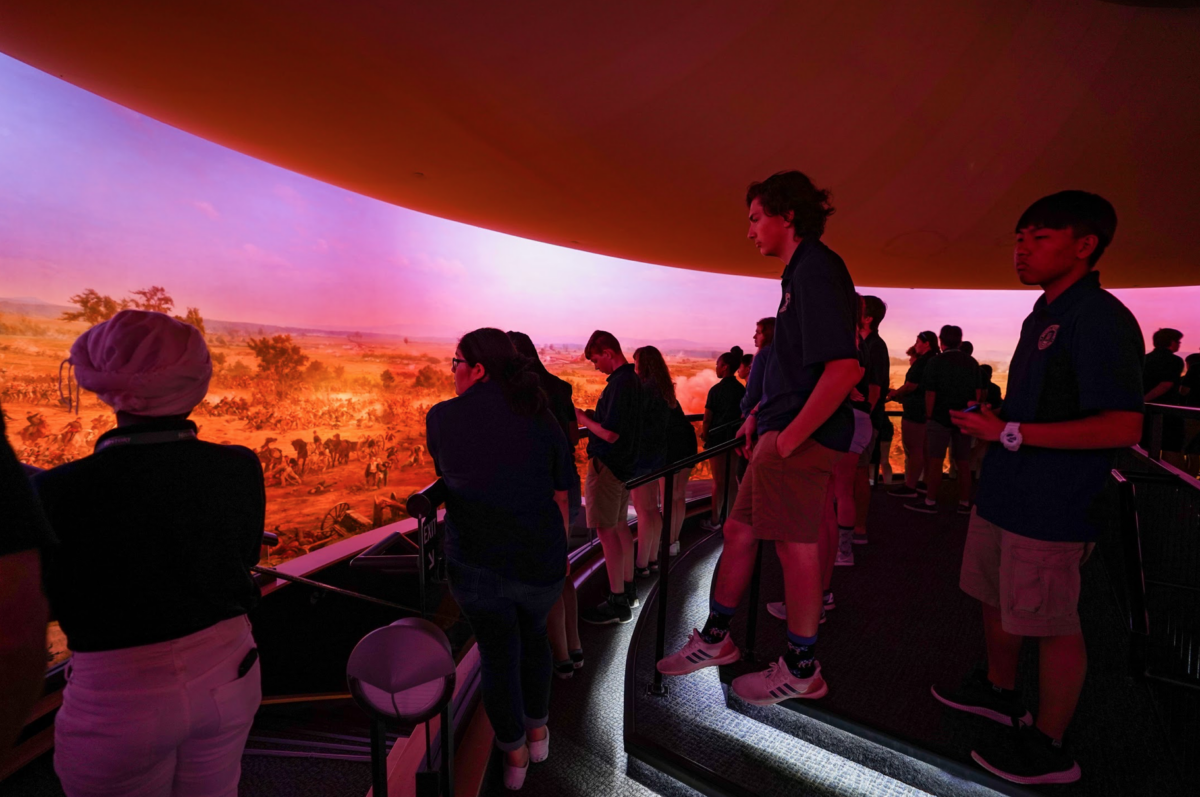“Four score and seven years ago…” is among the phrases that all Americans (well, at least those at National History Academy) instantly recognize as part of the fabric of America. President Abraham Lincoln began his most famous speech, the Gettysburg Address, with those very words. The Gettysburg Address affected civilians and soldiers alike because nearly all Americans had lost a father, brother, husband, or comrade during the Civil War. Throughout history, the Gettysburg Address has penetrated into lectures and classes across America; however, far too few Americans have the privilege of actually visiting Gettysburg Battlefield.
Fortunately, at the National History Academy, we have the opportunity to learn about the Civil War and its causes and repercussions (among other things) through site-based experiences. For me, these experiences are much more meaningful and memorable than dull classroom lectures. Especially during battlefield visits, I have been able to view history in a new light. Gettysburg was exceptionally well curated, and after touring the field, I felt that I grasped a deeper understanding of a commander’s strategy or the common soldier’s plight.
We began our day at Gettysburg by watching a short movie about the battle to ensure that we had a preliminary understanding of the events of the battle. The movie was informative, but, personally, my favorite part of the visitor’s center was the cyclorama depicting Pickett’s Charge on the third day of the battle. The cyclorama was created by French artist Paul Phillipoteaux in 1882. Although Phillipoteaux was not present at the battle, many veterans commended the work for its accuracy in portraying the bloodshed and horror of Pickett’s Charge. The cyclorama is 377 feet long and 42 feet high, making it one of the largest paintings in the world. I was struck, not only by the enormity of the painting, by the details of this massive work. Phillipoteaux expertly crafted the soldiers to have the looks of fear, terror, bravery, and courage painted across their faces. I was in awe that he was able to convey a soldier’s experience with stellar accuracy in the midst of fighting and bloodshed.
Next, we visited the Angle or High Water Mark of Pickett’s Charge. Pickett’s Charge was essentially the Confederates’ last attempt at winning the battle. However, it resulted in heavy Confederate casualties and destruction of Pickett’s division. The High Water Mark showed the point where a few Confederates were able to break the Union line before being repulsed by the Union soldiers. Instead of simply outlining the events of Pickett’s Charge, he told us stories of what soldiers had done during the charge. For example, he relayed the story of a Union soldier in the 69th Pennsylvania who had helped a dying Confederate soldier during the charge. Our guide also told us about a reunion hosted by Union soldiers, for both sides, who had fought in Pickett’s Charge. I find it amazing that soldiers who had once so bitterly fought each other were able to put aside the horrific events of the war and befriend each other.
After the High Water Mark, we drove to Little Round Top, a pivotal place in the battle. Little Round Top was the site of the flank of the Union line. Colonel Joshua Chamberlain and his division, the 20th Maine, were told to protect the Union flank at all costs. Colonel Oates and the 15th Alabama repeatedly charged Little Round Top in an attempt to break the Union line. Chamberlain responded by moving his men as if they were a door on a hinge to successfully counter Oates’ attacks. The heroic work of Colonel Chamberlain helped him rise to fame in the war. However, I believe the true heroism was within the soldiers who fought in the 20th Maine. Unlike many other regiments, these men were thrown together from all over Maine, and they had to work to strengthen bonds between each other to foster a sense of trust in the face of danger. If it was not for their courage, the Union itself could’ve been completely destroyed.
The Battle of Gettysburg truly shaped American history because if the North had not won the war cause would have been lost on the citizens and the South may have triumphed. Gettysburg boosted the morale of the Union soldiers, and it acted as a pivotal moment in which the war tide was turned to favor the Union. Personally, I appreciated the tales of Gettysburg from common soldiers; the tour guides effortlessly weaved these stories together to show the full picture of the meaning of Gettysburg from the greatest general to the poorest private. I believe these stories humanize America’s bloodiest war, and they show how compassion can persevere even in the most chaotic of environments.
